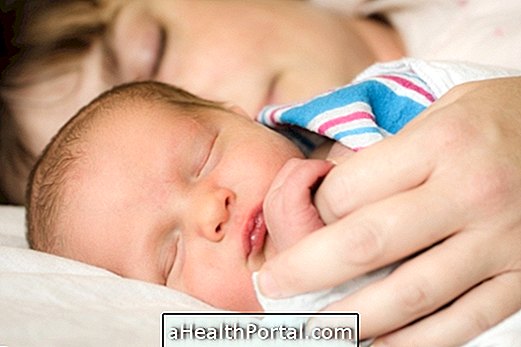The placenta is an organ that only exists during gestation and has several functions, such as cuddling the baby inside the uterus, transfer nutrients and oxygen from the blood of the mother to the baby and secrete some hormones fundamental for this phase. However, during pregnancy, unwanted changes in the placenta may occur, leading to risks and complications for the mother and the baby.
The functions of the placenta are:
- Provide nutrients and oxygen to the baby;
- Production of hormones;
- Immune protection of the baby;
- Protection of the baby against impacts on the mother's belly;
In addition, the placenta eliminates the wastes that the baby produces, such as urine.
Most common placental changes
Some changes that may affect the placenta are:
1. Placenta previa or placenta low:
When the placenta partially or totally covers the opening of the cervix, it may prevent normal delivery. It is common for pregnant women to have placenta previa early in pregnancy, but if the problem persists in the third trimester, it can cause bleeding and premature delivery. Learn more about what to do in case of placenta previa.
2. Placental abruption:
When the placenta is taken off the wall of the uterus, causing bleeding and reducing the amount of nutrients and oxygen sent to the baby. This problem usually occurs after 20 weeks of gestation and can lead to premature labor. Here's what to do in case of placental abruption.
3. Placenta accreta:
When the placenta is stuck to the uterine wall, resisting to leave at the time of delivery. This problem can cause hemorrhages requiring blood transfusion and, in more severe cases, total removal of the uterus and life threatening to the mother.
4. Placenta calcified or aged:
It is a normal process and is related to the degree of development of the placenta. This change is only a problem if the placenta is classified as grade III before 34 weeks because it may cause a decrease in fetal growth rate. In general, the woman has no symptoms and this problem is identified by the doctor in routine ultrasound.
5. Placental infarction or placental thrombosis:
When thrombosis occurs, it is the clogging of some blood vessel of the placenta, causing decrease in the amount of blood that goes to the baby. Although this complication can cause miscarriages, it can also cause pregnancy problems and go undetected. Check out what to do in case of placental thrombosis.
6. Uterine rupture:
It is the rupture of the uterine musculature during pregnancy or childbirth, which can cause premature delivery and maternal or fetal death. Uterine rupture is a rare complication, treated with surgery during labor, and its symptoms are severe pain, vaginal bleeding, and decreased fetal heart rate.
To prevent and identify changes in the placenta before the onset of serious problems, routine routine visits to the obstetrician should be followed and the ultrasound examinations required at each stage of gestation. In cases of vaginal bleeding or severe uterine pain, seek medical advice.


How the placenta is formed
The placenta is made up of tissues of the uterus and the fetus. Initial growth of the placenta is rapid and in the first trimester of pregnancy it is larger than the baby. By 16 weeks of gestation, the placenta and baby are the same size, and by the end of pregnancy the baby is already about 6 times heavier than the placenta.
After a normal delivery, the placenta leaves spontaneously after 4 or 5 uterine contractions, which are much less painful than the contractions that occur during the baby's exit.




















